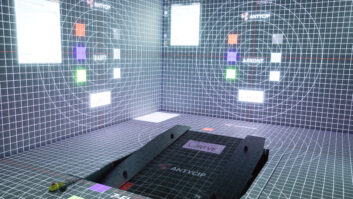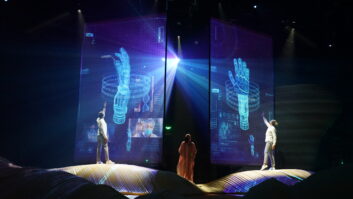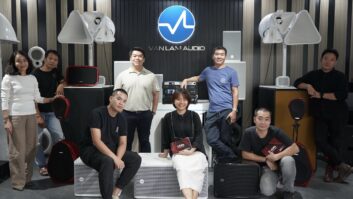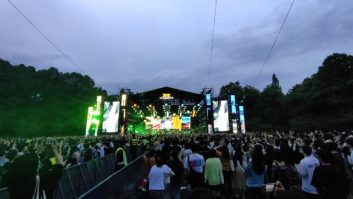 Imagine a world far, far away, way back in the mists of time. About 12 months ago. We braved the rush hour, we came to work, we went to the coffee shop, we shared our office spaces. And we socialised. We bumped into friends and colleagues. Coincidental conversations enriched our day whether it be fresh ideas for that latest project, or support to try something new and different. And we didn’t even think about the way that we worked, interacted, studied, communicated. This was just how we did it.
Imagine a world far, far away, way back in the mists of time. About 12 months ago. We braved the rush hour, we came to work, we went to the coffee shop, we shared our office spaces. And we socialised. We bumped into friends and colleagues. Coincidental conversations enriched our day whether it be fresh ideas for that latest project, or support to try something new and different. And we didn’t even think about the way that we worked, interacted, studied, communicated. This was just how we did it.
Only those with a real working crystal ball could have foreseen the changes and the disruption that Covid-19 was about to bring to our world. And what a change it has been. For a few difficult months there was no gathering, no working together, no shared lunches, no social anything.
Learning spaces
In the university world, the requirement to isolate has certainly caused change. We prefer students to be on campus; we understand the value of face to face and peer to peer interaction. We know that practice, seeing and doing, is invaluable to the learning process. We set up learning spaces precisely for this purpose and we give them fancy names like Problem Based Learning or Collaborative Interactive Theatres. Humans are social animals and we recognise the importance of the shared experience in the development of our knowledge and comprehension.
So how does an organisation predicate on the on-campus and real-world experience pivot to online learning? The answer is: with speed. Because we had no choice.
Due to the foresight of my forebears we have flexible approaches to tech based on a building block approach. We have standard options for rooms that offer the same capabilities from the smallest classroom to the largest lecture theatre. There is always compute, display, visualiser, screen mirroring, lecture recording in a classroom. The particular technology or kit depends on the size and character of the room, but the capabilities are always there.
We run AV over IP wherever we can and it makes sense to, we have collaborated well with our network team to ensure that we have a viable architecture to use as a template for all spaces. We plan the basics and know that we can never second guess what technology will arrive with our academics and students for teaching purposes.
So there is flexibility for each space. From plugging in microscopes in bio labs to centre of the room interaction for education students, music for dance studios to law court conferencing, it’s the same base system. We call it the DTS – Digital Teaching System.
Physically present
Prior to the pandemic we had (slowly) been adding room cameras to our classrooms. We have metropolitan campuses in a major city, our culture was of students attending rather than accessing remotely. For those that didn’t make it to campus, lecture capture of content was thought to be sufficient. Cameras in meeting rooms were rarely used as we travelled on the inter-campus bus for 10 minutes to be physically present in meetings.
Covid certainly changed our direction but rather than a disrupter, we see it as an accelerator.
building blocks
The flexibility in our systems and the building block approach means that we were able to adapt and fast-track changes. Lecture capture microphones could be used for web conferencing to provide synchronous delivery in addition to the traditional asynchronous content. At a pinch, web cams could be plugged into teaching systems. (Having AV and IT for learning spaces under the same line management is immensely useful, a product based approach to technology for physical spaces.) It was surprising how many academics were on campus
in otherwise empty rooms, making use of the technology that they knew and understood, to keep their students engaged and learning. This was the quick fix, a rapid response to an almost emergency situation.
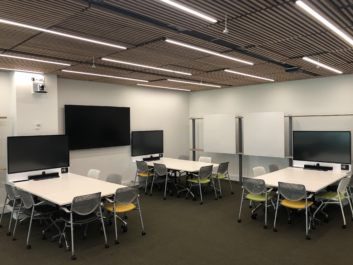 The quick fix taught us a couple of things very early on. For those students who had traditionally been on campus and now were restricted only to conferencing, the experience wasn’t always stellar. We understand the fatigue of maintaining attention, of concentrating through a camera for long periods of time. The reality of distractions at home like pets on the keyboard did make for some good memes, but perhaps not the best quality learning. These students wanted to return to campus for their usual learning experience.
The quick fix taught us a couple of things very early on. For those students who had traditionally been on campus and now were restricted only to conferencing, the experience wasn’t always stellar. We understand the fatigue of maintaining attention, of concentrating through a camera for long periods of time. The reality of distractions at home like pets on the keyboard did make for some good memes, but perhaps not the best quality learning. These students wanted to return to campus for their usual learning experience.
What was not anticipated was the enthusiasm for the online experience. But it made sense. Students for whom uni is an hour bus ride away had at least two hours of their day back. Those who are trying to work and study could make their lecture a few minutes after they finished their work shift. And there was something comforting about attending lectures in fluffy PJs. Amongst the uncertainty we had found an opportunity to offer a new learning experience.
So we have two different approaches that seem to pull us in different directions – the on campus social experience and the off-campus efficiency dividend. How do we deal with these contradictory paradigms? The answer is of course,
why not have both. For each space that we maintain, we need to offer the same experience for students on or off campus and whether the content is being accessed in real time or asynchronously through lecture recording.
Our new building blocks of DSP, ceiling mics and cameras where necessary can be added to almost every space. Planning Semester 1 delivery and for the rest of the year is focussed on making
as many of these spaces available as possible. At the start of the pandemic
we were fortunate in being part of a refurbishment project and were able to test the addition of our new components with great success.
Functioning space
Technically the systems work well, but that also has to be matched with client familiarity and ease of use to ensure that the space can function as expected.
We achieve this by offering the simplest control that we possibly can across all spaces. There should be no technology mental load for any person walking into our rooms. A simple source selection and system on/off control suffices for the majority of our spaces. The true complexity of control options are hidden from immediate view but available for those who have the interest and desire to offer more intricate presentations. The addition of the new building blocks has resulted in only minor changes to control panel – a room mic on/off and a room camera on/off. If you were used to teaching and controlling a space pre Covid, you’ll be able to do the same post Covid. Same buttons in the same places, just a couple of minor additions for your students’ benefit.
improved experience
And that is really why we undertake the research, development, project management and the many other
skills and tasks necessary to deliver
good quality learning spaces in our environment. The end result may appear to be only two buttons on a control panel. With those two buttons we can improve the student experience and perhaps contribute to their learning outcomes, offering them opportunities that were not available in a pre-Covid world.
